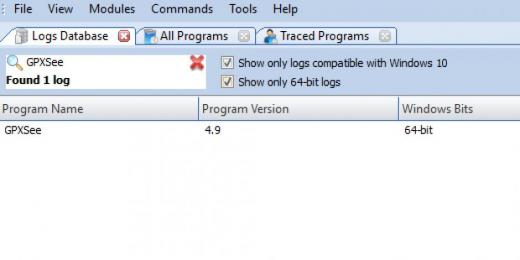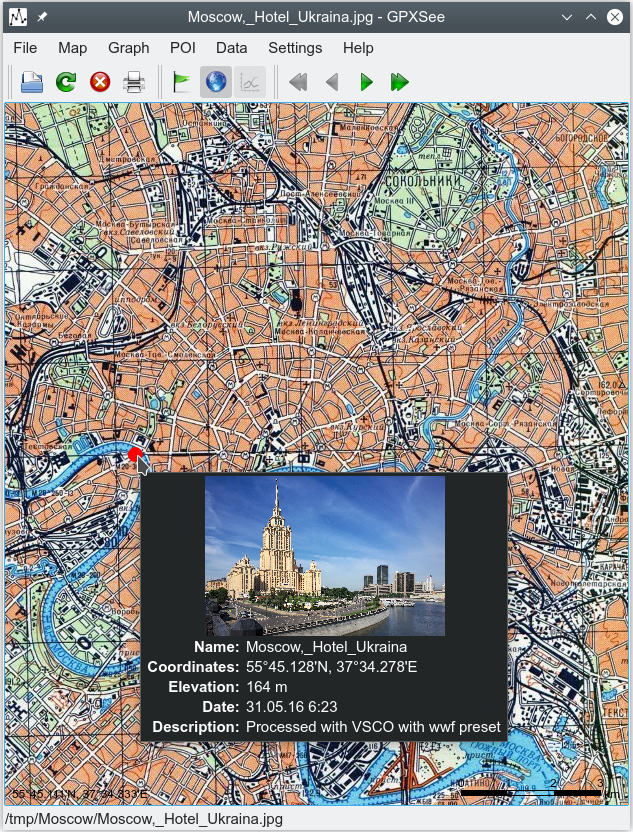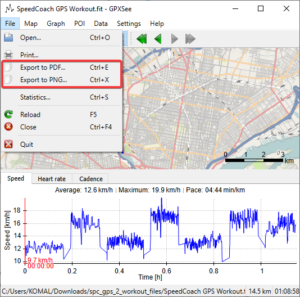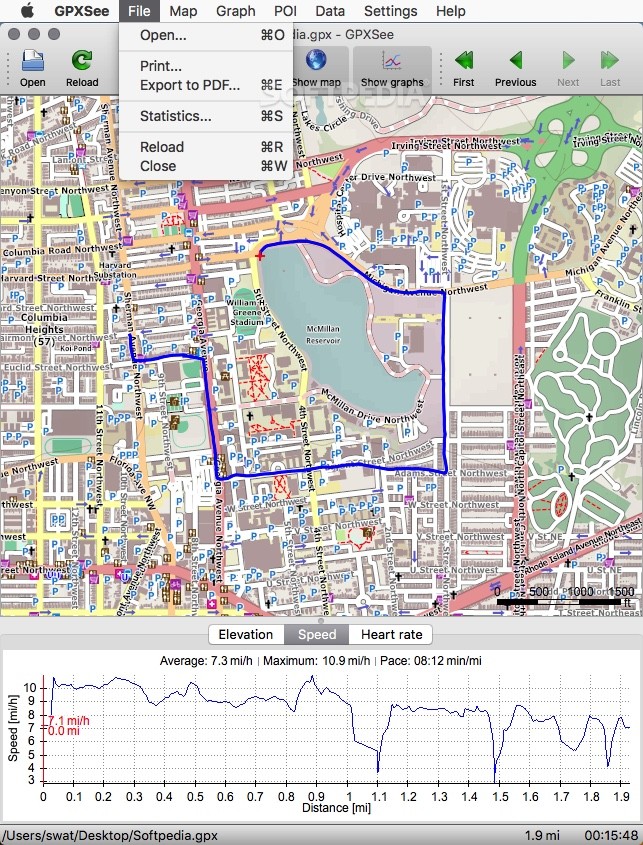

These five photos did not make it to the track, but there are still plenty of photos to build a route. These are not errors, but insignificant warnings that the gpsaltitude tag is not defined for some files – perhaps the GPS was turned off during the shooting or some other failure during the shooting. Warning: Tag 'gpsaltitude' not defined. The screenshot shows that 33 images have been processed, but the output also contains the following lines: (dot) as a directory, that is, the current directory:Įxiftool -fileOrder DateTimeOriginal -p /usr/share/perl-image-exiftool/fmt_files/gpx.fmt -d %Y-%m-%dT%H:%M:%SZ. This option sets the format of the date and time in the output.Ī folder with photos that you want to process to compose a movement track.

#GPXSEE DOWNLOAD DOWNLOAD#
Windows users, apparently, need to download the package for Linux from the ExifTool website and take the file from there. On Arch Linux/BlackArch, the path to this file is /usr/share/perl-image-exiftool/fmt_files/gpx.fmt Linux users can find it on their system with the commandįor example, in Kali Linux, the path to this file is /usr/share/doc/libimage-exiftool-perl/fmt_files/gpx.fmt This gpx.fmt file is provided by ExifTool. gpx files regardless of the dates specified for the points, but simply sequentially. Even more surprising, GPX programs process. Surprising as it may seem, but ExifTool processes and displays data not by the date of shooting, sorting by another criterion is used. We set the sorting of the displayed data by the time of shooting the photographs. To create a GPX route file from photos, you need to run the following command:Įxiftool -fileOrder DateTimeOriginal -p /PATH/TO/gpx.fmt -d %Y-%m-%dT%H:%M:%SZ DIRECTORY > out.gpx Fortunately, ExifTool is already able to do this and we just need to specify the folder with photos.
#GPXSEE DOWNLOAD SERIES#
And the challenge is to generate this file based on meta information from a series of photos. In general, this is a text file with content like this:Īs mentioned on Wikipedia, there are many programs that understand GPX. The format is accepted by many programs, including Google Earth, Ozi Explorer, Yandex.Navigator (see the official list here). Examples of user information include terrain altitude (ele), speed, heart rate (hr), number of steps, cadence, temperature, etc. The XML schema also provides for storing arbitrary user information for each point, only longitude and latitude are required. Track points also store the travel time of the point. For each point, its longitude, latitude and height above sea level are stored (if information about the height is available). It can be used to describe waypoints, tracks, and routes.

#GPXSEE DOWNLOAD LICENSE#
GPX is a free format and can be used without any license fees. GPX (GPS eXchange Format) is an XML-based text format for storing and exchanging GPS data. Let's take a look at the GPX quote from Wikipedia. The program looks at what time the picture was taken, then looks at the coordinates of that point on the track, which corresponds to this time, and then simply writes these coordinates into the metadata of the photo. For each snapshot, the time of its creation is also known (stored in the meta information and file properties).

Each track point has two characteristics: 1) time and 2) coordinate. And while shooting, start recording the route – you can easily find free programs that can do this, the main thing is that it can save the recorded tracks in GPX format. Its essence is as follows: when shooting with a camera without GPS, take a mobile phone with you, it has a GPS chip. It is the opposite of the one that will be described in this article. You can use a technique called GPS correlation. We will consider four programs at once, two of which are cross-platform and they work on Windows as well.īy the way, note to the owners of SLR cameras without GPS: if your camera does not have a GPS chip, this does not mean that your photos cannot have GPS tags. Of course, manually placing markers on the map is tedious, and in this article we will talk about programs that allow you to automate the process of building a route based on GPS data from a series of photographs. This can be used to reconstruct movement or for any purpose (calculate the number of kilometers traveled, average speed, and so on). If the photos have GPS tags, then by placing these locations in chronological order on the map, you can see the route of movement. Reconstruction of movements based on photographs


 0 kommentar(er)
0 kommentar(er)
